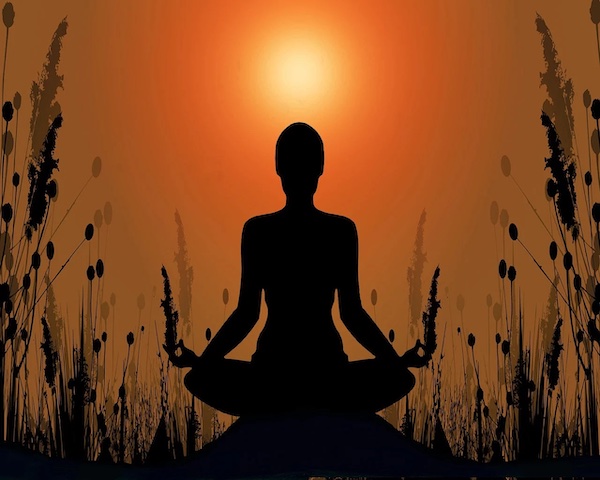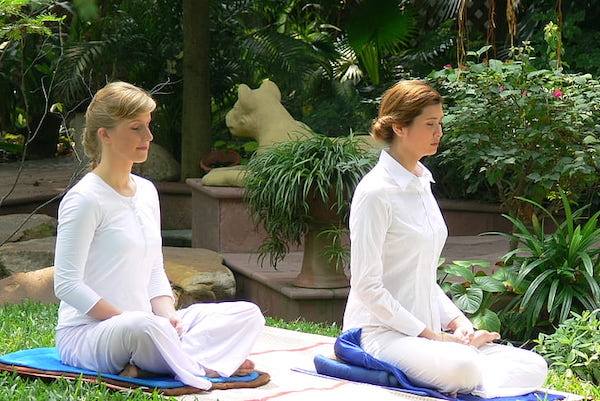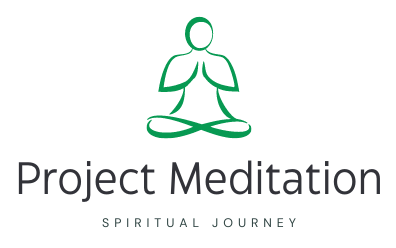Guided Meditations For Beginners offer an accessible and convenient way for individuals new to meditation to learn the basics and experience the benefits of this practice. These sessions, facilitated by an experienced guide or through a dedicated app, can help ease novice meditators into mindfulness techniques, relaxation strategies, and visualization exercises designed to promote mental focus, self-awareness, and stress relief.
As you embark on your meditation journey, consider trying out the following guided meditation techniques:
- Guided meditations for beginners: Explore introductory sessions specifically tailored for newcomers, such as those found in the Headspace meditation guide.
- Visualization: Engage your imagination with guided visualizations that transport you to tranquil settings or prompt you to envision positive outcomes.
- Breathing exercises: Learn various breathing techniques that promote relaxation and enhanced mental focus.
- Mindfulness: Develop a heightened awareness of the present moment through guided practices focusing on self-awareness and acceptance.
- Relaxation: Discover how to release physical tension and calm your mind using progressive muscle relaxation and other soothing strategies.
- Body scan meditation: Cultivate a deeper mind-body connection by systematically scanning each body part for signs of tension or discomfort and releasing it.
- Loving-kindness meditation: Foster feelings of compassion and love for oneself and others through affirmations and heart-centered imagery.
As you become more comfortable with these guided meditations for beginners, consider exploring additional methods like mantra meditation, walking mediation, or yoga-based practices to support continued growth in your personal journey toward tranquility.
Mantra Meditation
Mantra meditation is a powerful technique that has been practiced for centuries by individuals seeking mental clarity, self-awareness, and inner peace. By incorporating the repetition of sacred phrases or mantras into their meditation routine, practitioners can cultivate concentration and harness the power of intention.

To begin mantra meditation, it’s essential to find the right phrase or mantra to suit your intentions and needs. Many practitioners choose a traditional Sanskrit word like “Om” or “So hum,” while others may opt for more personalized affirmations in their native language.
Regardless of your choice, ensure that your selected mantra resonates with you on a deep level, as you’ll be repeating it continuously throughout your session.
Practicing mantra meditation comes with numerous benefits beyond improving concentration and promoting serenity; it’s also known for its transformative ability to foster transcendence – a shift in consciousness towards a higher state of being.
Breathing Meditation
Breathing meditation is a powerful technique that offers numerous benefits for mental health and overall well-being. By focusing on rhythmic breathing patterns, the practice aims to induce relaxation and enhance mindfulness.
Starting with simple deep breaths can lead to profound changes in one’s state of mind, promoting feelings of calmness and lowering levels of stress hormones. For example, tranquil breathing is a popular method that involves inhaling deeply through the nose before releasing it slowly through pursed lips—like gently blowing out a candle.
In addition to these techniques are practices like tummo—a form of Tibetan yoga—which combines visualization elements with specific breath control exercises to generate heat within the body.
Remember that patience is key when learning new meditation techniques; take time each day to dedicate yourself intentionally to improving focus on breathwork as part of your journey towards self-awareness and personal growth.
Body Scan Meditation
Body scan meditation is a powerful technique that helps you reconnect with your body and improve self-awareness. By guiding you through an in-depth exploration of different bodily sensations, this meditation style encourages profound relaxation, bolsters the mind-body connection, and enhances overall mental health.
As you transition into deeper relaxation, begin focusing on your toes or the top of your head – whichever feels more natural for you – gradually moving throughout your entire body.
Pay close attention to areas that may feel tense or tight. For example, while examining the muscles in your face, notice if there are any feelings of discomfort around the eyes or jawline due to day-to-day stressors.
By incorporating body awareness techniques like breathing exercises within the body scan meditation routine regularly, individuals can experience numerous mental health benefits, such as reduced anxiety and enhanced mindfulness, which can lead to better stress management skills both at work and home environments.
Loving-kindness Meditation
Loving-kindness meditation, also known as compassion or metta meditation, is a Buddhist practice that has gained popularity worldwide. This type of meditation involves focusing on sending love, kindness, and positivity to oneself and others.
The benefits of this type of mediation are numerous. Research shows that it enhances positive emotions such as joy, optimism, and gratitude while reducing negative emotional states like anger and anxiety.
To begin loving-kindness meditation, find a comfortable seated position in a quiet place free from distractions. Close your eyes and envision the person or group you want to send love to; this may be yourself or another person depending on what intention you set for your practice that day.

In conclusion, Loving-Kindness Meditation grants practitioners the opportunity to develop an empathetic outlook toward themselves and others while promoting emotional well-being through self-care practices focused on inner peace development through kind thoughts about everyone around them, regardless of their social status.
Irrespective of the presence of one’s own issues, when practicing loving-kindness meditation consistently gives us hope in our journey towards improving ourselves for better days ahead!
Walking Meditation
Walking meditation is a powerful way to combine exercise and mindfulness practice. It involves taking slow, deliberate steps while focusing on your breath, body sensations, and the present moment.
To practice walking meditation, find a quiet place where you can walk uninterrupted for at least 10 minutes. Begin by standing still and taking a few deep breaths, allowing yourself to settle into the present moment.
Then start moving slowly forward with each step in sync with your breath.
Walking meditation can be practiced in nature or any quiet environment, which helps deepen our connection with the earth around us.
In Buddhism philosophy, Thich Nhat Hanh calls walking meditation a “Pleasant Way To Deepen Our Connection With The Earth.” He suggests that mindful walking brings healing to our bodies and minds by connecting us more deeply with ourselves and the world around us.
One key benefit of walking meditation is Body awareness: People who struggle sitting still feel more comfortable practicing Walking Meditation than any other form of Meditation: It’s because when we take care when we walk, Mindfully noting every tiny sensation from sole contact with an object on the ground beneath our feet: noticing muscles movement in legs knees hips arms shoulders .etc., Heightened present-moment awareness creates a sense of peace within oneself – cultivating deeper acceptance and appreciation towards our physical being.
Mindfulness Meditation
Mindfulness meditation is a practice that involves focusing on the present moment and becoming aware of one’s thoughts, feelings, and surroundings without judgment.
A key aspect of mindfulness meditation is learning how to observe your thoughts without getting caught up in them. By simply acknowledging your thoughts as they arise and letting them pass by, you can learn to detach from negative thinking patterns that can lead to anxiety or depression.
Neuroscience research has shown that mindfulness meditation can actually change the structure of the brain over time, leading to improved cognitive function, increased emotional regulation, and even enhanced immune system functioning.
Yoga And Meditation
Yoga and meditation are intertwined practices that help achieve physical, mental, and spiritual balance. Yoga is a form of exercise from India that involves controlled breathing exercises and postures to promote flexibility in the body while calming the mind.
Combining these two practices, yoga meditation offers numerous benefits for both your physical fitness and mental health. It can help you cultivate self-awareness, reduce stress levels, and increase relaxation techniques like breathwork or visualization exercises – all while promoting inner peace.
For yoga practitioners who want to incorporate meditation into their daily routine but do not know where to begin, there are different types of guided meditations available online for beginners.
Mantra meditation involves repeating a word or phrase silently as you sit quietly with your eyes closed.
Overall, incorporating yoga meditation into your lifestyle can lead to spiritual growth; it can be an essential tool for anyone looking to balance themselves mentally or physically and combat daily stressors without relying on medication or psychological tools alone.
FAQs:
1. What are some meditation techniques for beginners?
Some beginner-friendly meditation techniques include mindfulness, guided meditations, body scan, and loving-kindness meditation. These techniques help calm the mind and improve focus by encouraging a state of relaxation.
2. How do I choose the right meditation technique for me?
It’s essential to experiment with different methods to find one that resonates with you best. Start by exploring basic practices such as breathwork or visualization before moving on to more complex types like transcendental or Kundalini yoga.
3. Can I practice meditation without any prior experience?
Yes! Meditation is accessible to everyone regardless of age, background, or experience level. All it takes is an open mind and a willingness to commit time and effort to cultivating a regular practice.
4. What are the benefits of incorporating daily meditation into my routine?
Studies have shown that regular meditation can benefit both physical and mental health in various ways, including reducing stress levels, strengthening immunity, improving cognitive function, enhancing creativity, and increasing emotional stability & resilience, among many others! With consistent dedication towards this rewarding habit – there is potential to unlock endless possibilities within your personal growth journey!
